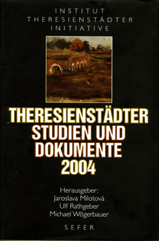Naturkautschuk im Zweiten Weltkrieg. Boom und Scheitern eines Forschungsprojekts
Natural Rubber in the II World War. Boom and Fail of a Research Project
Author(s): Susanne HeimSubject(s): History
Published by: Institut Terezínské iniciativy - Sefer
Keywords: Auschwitz; Nazi scientists; Kaiser Wilhelm society; dandelion; rubber; looting; agriculture; Holocaust; women;
Summary/Abstract: Notwithstanding intensive historical research on Auschwitz some aspects of the concentration camp are hardly known; e.g. the agricultural research unit which was part of the camp. There a plant breeding project of strategic importance was conducted. The Germans tried to increase the rubber content of a specific dandelion-like plant, kok-saghyz, in order to minmize Germany’s dependence on natural rubber imports from overseas. The project was closely linked to German expansion policy to Eastern Europe and based on resources captured in the occupied territories: seed, plants, arable land and workers. This article will first investigate the boom of rubber plant research following the German invasion of the Soviet Union - and it’s failure. It will also examine how rubber plant research was pursued in the Auschwitz concentration camp as well as the working conditions and the struggle for survival of the mostly female prisoners working in the project, who were transferred here from the Auschwitz core camp.
Journal: Theresienstädter Studien und Dokumente
- Issue Year: 2004
- Issue No: 11
- Page Range: 261-305
- Page Count: 45
- Language: German
- Content File-PDF

